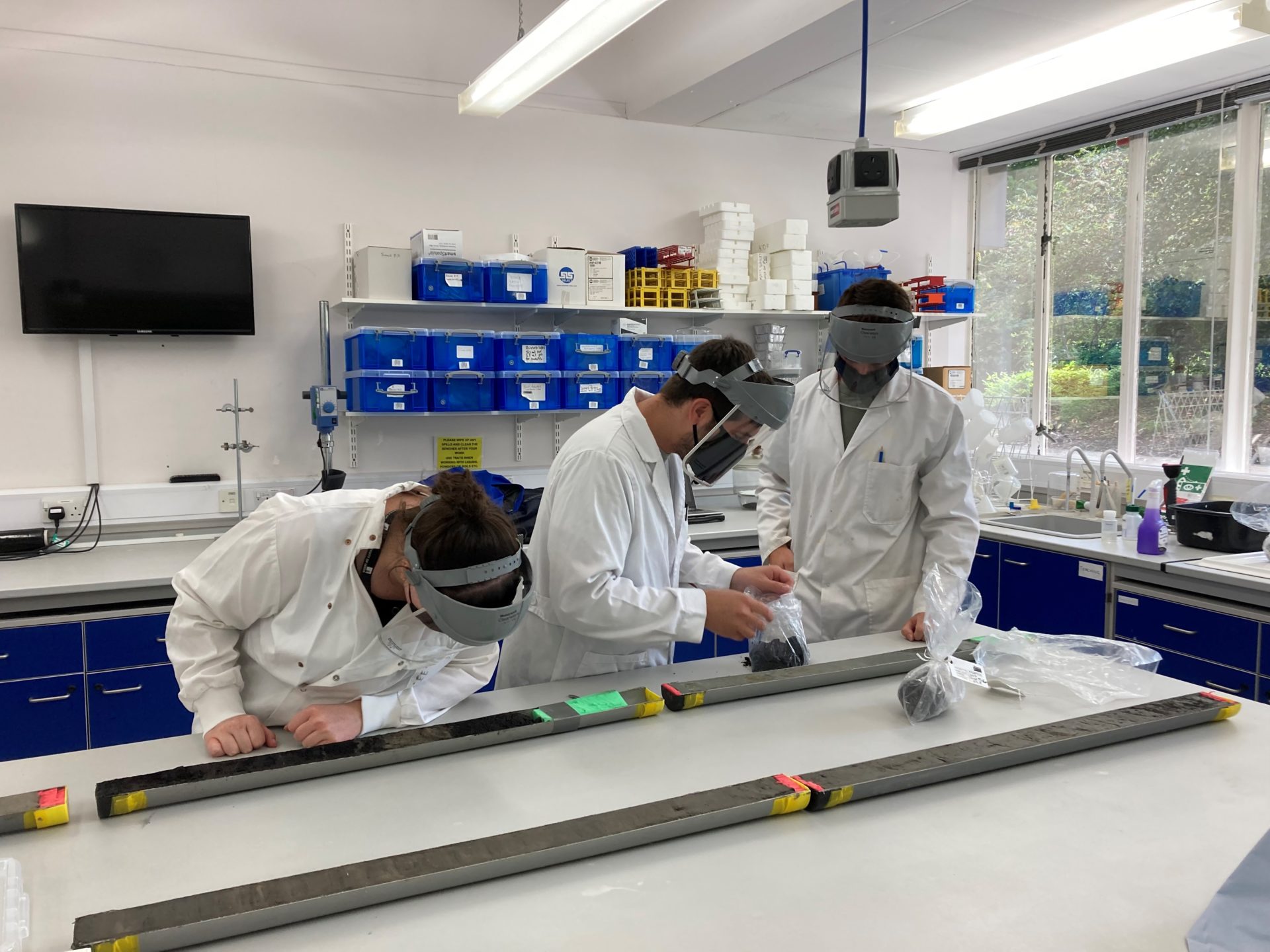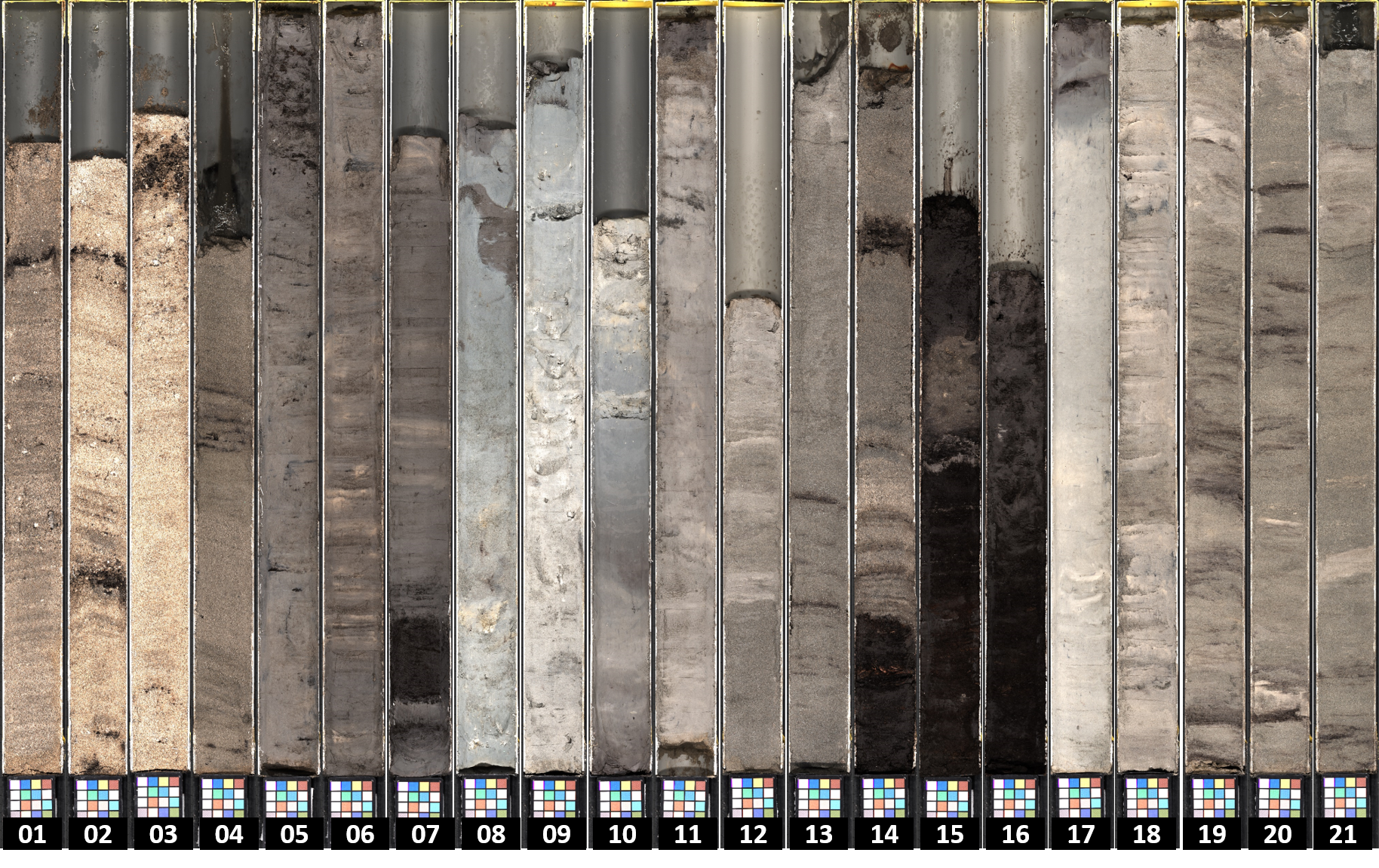RISeR in the lab

As for everyone, the Covid pandemic has impacted the RISeR project. In particular we have experienced significant delays getting a cold-storage container on campus and therefore were unable to hold the cores Leeds, which further delayed starting laboratory work. However, happily since summer 2021 lab work has commenced in earnest, furthered by Dr Amy McGuire and Dr Graham Rush, both micropalaeontology experts, starting with the project. Our project modelling expert, Oliver Pollard, has also been in the lab getting experience with the types of core material we work with, that in turn will help constrain his model outputs.
Laboratory work to date has focused on sedimentological logging of the cores, led by Dr Víctor Cartelle, which alongside the amazing datasets we have received from the core scanners at BOSCORF have already revealed very exciting and varied lithologies. Víctor has now left the project to move to a new postdoctoral position in Belgium and he leaves a wealth of knowledge that RISeR has vastly gained from. We look forward to working with him over the remainder of the project.

RISeR 'core 7' stratigraphy
Graham and Amy are now focusing on analysing the pollen and foraminifera in the cores to reconstruct the palaeolandscapes. Natasha has even been found in the lab preparing and looking at diatom samples (unfortunately with no diatoms found, as yet)! We are also working closely with a series of chronology experts to constrain the timing of landscape change, and the rates of sea-level rise. Working on estuarine sediments at timescales which occur prior to the window for radiocarbon dating was always going to be an interesting challenge.
We have also welcomed Irene Waajen to Leeds to work on the cores. Irene is a PhD student at the University of Utrecht and has been sampling the upper part of the cores thought to contain ‘Brown Bank’ material, to contribute to her thesis on understanding palaeolandscapes and sea level in the North Sea during late MIS 5 to MIS 3. Furthermore, MGeol student Leah Babington has been conducting her Masters dissertation on some of the lower sediments, comparing the results from the new BOSCORF 2D X-ray radiography and pseudo-3D laminography equipment, against detailed grain analysis in the Sorby Lab at Leeds.
The project is entering a really exciting new phase, moving from geophysical models of the wider landscape, to detailed proxy-based reconstructions.
